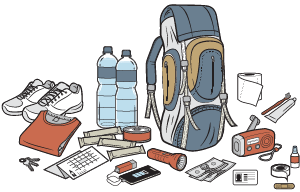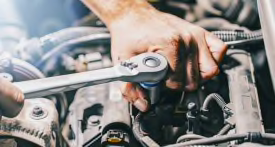12 Ways to Keep Your Family Safe and Connected in an Emergency
Disasters can cut you off from loved ones without warning. Planning ahead can avoid that.

When a calamity occurs, a little preparation can make a huge difference. That’s particularly true when it comes to keeping track of loved ones in the event of an emergency, such as a natural disaster.
“Always have an emergency plan with at least three different methods of communication,” says David Ofwono, director of First on Compliance, an emergency preparedness consulting company based in California. “If something occurs, the first thing I need to know is, are the people I care about okay?”
Here are 12 ways to keep your family safe and connected in an emergency.
Set Up Multiple Ways of Connecting
• Enter key contacts into the phones of all your household members. Give household members paper contact lists too. Tap someone outside your area to be an emergency communication hub. Everyone can agree to contact that person in the event you can’t reach each other. And make sure your electronic devices are ready for a natural disaster.
• In a crisis, text rather than call. “Anytime there’s a disaster, the first thing everyone does is jump on their cell phones, which overwhelms the bandwidth for the providers,” Ofwono says. “But texting takes up less bandwidth, and texts may go through.”
Hone Your Family's Emergency Plan
• Store go bags and emergency kits where they’re easy to grab. Check every few months to make sure the food items and medicines inside haven’t expired, and that your documents are up-to-date.
• Save directions to local shelters, and have a paper map on hand as well. Find out in advance which shelters will take your pets.
• Run drills with your household at least annually. Practice dealing with fire, entering a safe room, evacuating, and packing the car. Determine where to meet outside the home if separated; scout at least two alternative, easy-to-reach places. Turn drills into games to motivate—rather than frighten—the kids. To motivate pets, reward them with treats.
Connect With Your Community
• Talk to neighbors about resources, such as firewood and tools, that can easily be shared or swapped. Think twice, though, if you’re considering sharing your portable generator, says David Trezza, the CR engineer who leads generator testing. Doing so safely requires using the right extension cords (12 gauge or heavier) and making sure you’re clear with your neighbor on who will monitor and maintain the unit. “I personally don’t think it’s a great idea,” Trezza says. CR recommends the use of a transfer switch with portable generators, which enable you to safely feed electricity directly into your own home’s system.
• Get involved with a community emergency response team, or CERT. These groups of residents are trained to prepare, aid, and equip neighbors to deal with emergencies. Find out who in your neighborhood can perform cardiopulmonary resuscitation (CPR) and first aid. Or better yet, get trained yourself, either online or in person.
How to


















